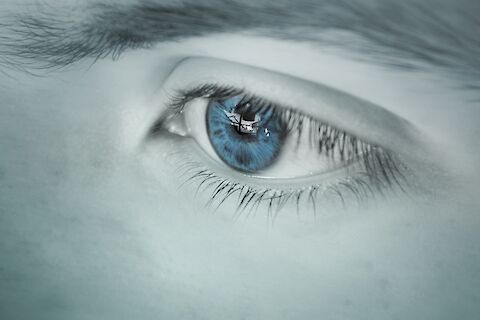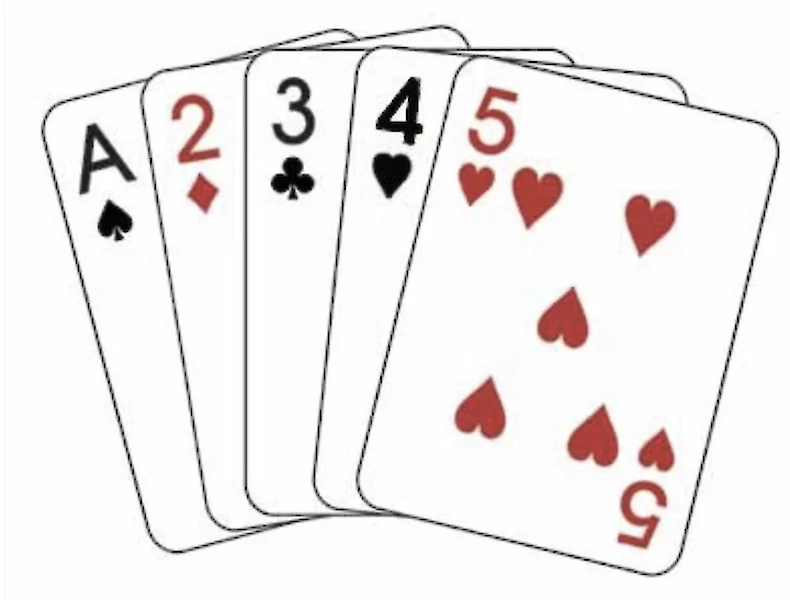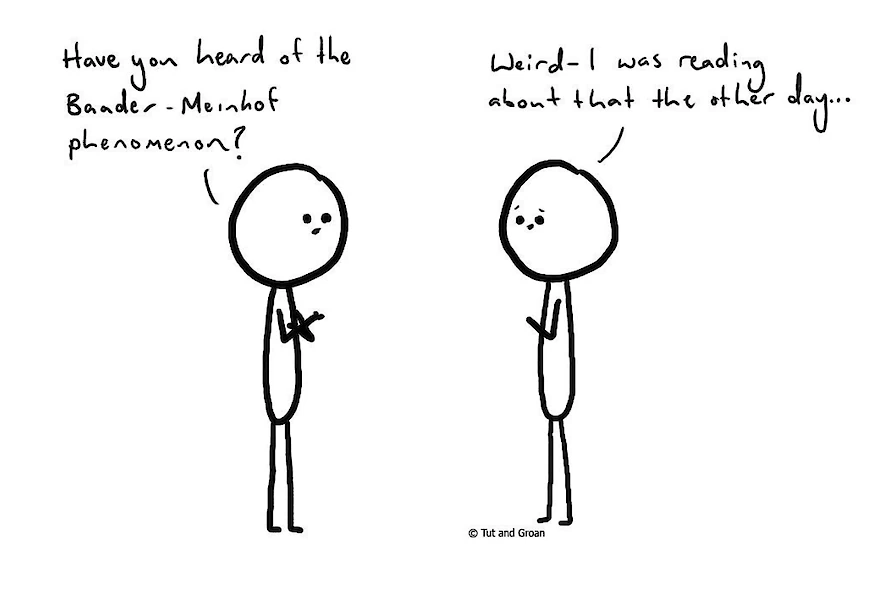

The human mind is really complex. We know this. It can make think, feel, smell, taste and experience things that aren't even there. It is one of the things we often debate about when it comes to the paranormal because with all of its complexities, how can you tell what is made up from the mind and what is potentially paranormal? We then ask the question, why does our mind make us feel or experience these things, is there a reason or something within our subconscious? I mean I could talk about this all day long as it is my favourite kind of topic.
One of the things that our mind tends to do as we know is fill in the blanks and makes us see things that maybe are not there. What about the things that we don't see? We focus a lot on what we do see but maybe not so much on what don't see. More importantly, why don't we see it? Our brain is really good at blocking out things that we don't need to see and it turns out, this is really important for us to know when it comes to the paranormal. So let's look at why!
Ideosensory
A little while ago I started collecting some submissions of stories about the JOTT (Just one of those things) phenomena. Otherwise known as the disappearing object phenomenon, put simply is where an item disappears and reappears sometime later. If you want to read more about JOTT, check out my article JOTT: Just One Of Those Things
As a part of this project, I collected stories from readers who had their own experiences and from this I submitted the following comment which could offer an explanation for some of these phenomena:
"Hi Sarah. In Hypnotic terms there is as something described as Ideosensory, where you may not be able to see an object that you may be close to, but at a later point you become aware of the object."
So I wanted to look into this further.
Ideosensory activity refers to the capacity of the brain to develop sensory images, which may be kinesthetic, olfactory, visual, auditory, tactile, or gustatory. A common example of ideosensory activity is looking at a fire and “seeing” the “face” of one's beloved. During negative ideosensory activity, there is a denial of actual sensory experiences, such as not seeing or hearing something that actually is present (e.g., looking for one's pencil and finding it in front of one). A typical example is the complete absorption in an interesting book that produces a selective type of “deafness” to irrelevant stimuli. Imagining the “smell” of a certain odor that does not actually exist is an example of a positive ideosensory activity.
Ideosensory activities are used as misdirection to obtain a somatic response. The subject must be involved in as many ideosensory experiences as possible, as this facilitates hypnotic conditioning. The subject must think of these in terms of his own memories, ideas, and sensations, that is, those that he has already experienced. When, for example, the author wishes to induce hypnoanesthesia, he has found the following suggestion to be helpful, “Your hand is getting just as numb as if it were frozen, or as if you had been sitting or sleeping on it.” Nearly everyone has experienced this sensation. Naturally, to elicit ideosensory activities, the posthypnotic suggestions must revive responses previously experienced by an individual—his experiential background. The mention of a specific food to a hungry individual, for instance, is likely to produce salivation only if he has experienced the taste of that particular food.
Obviously, this is quite specific to hypnotherapy as it is an important tool to understand when working with patients, however, the part that is relevant to us is what is referred to as a negative ideosensory activity: During negative ideosensory activity, there is a denial of actual sensory experiences, such as not seeing or hearing something that actually is present (e.g., looking for one's pencil and finding it in front of one). A typical example is the complete absorption in an interesting book that produces a selective type of “deafness” to irrelevant stimuli.
Irrelevant stimuli is something that our brain has decided isn't relevant to us or important for us to notice. In the example above, the pencil has always been sitting in front of a person, but they never noticed it because it was relevant. So when we apply this to the JOTT phenomena where something disappears and seems to come back, maybe it didn't disappear at all? Maybe it was already there and we didn't notice? It doesn't explain every case of course, but it reminds me of something that often happens on a paranormal investigation, especially when finding items like rocks or coins. People tend to think spirits throw rocks or leave coins for them. They find a coin that seems to have suddenly appeared on the floor that they swear wasn't there before. Without any sort of photographic or video proof, of course we have to entertain the idea that maybe it was always on the floor, we just didn't notice it?
Much like the 'deafness' referenced above when someone is immersed in a book, this happens to us when we are on a paranormal investigation. We are often so focused on the task at hand that we can miss something important happening right in front of us.
Inattentional blindness
Inattentional blindness was coined by Arien Mack and Irvin Rock based on the studies they completed throughout the 1990's and released their findings in their book 'Inattentional blindness' in 1998. The research in this area of course had been happening for decades prior, but like many things, it wasn't given a proper name until the '90s. In their testing, they would display a cross briefly on a computer screen and would ask the subjects to decide which arm of the cross was longer than the other. After a certain amount of passes, they would include a brightly coloured rectangle. When asked afterwards if participants saw anything other than the cross, most did not even notice the rectangle because they were staring and focusing their attention on the cross.
An easy way to make a connection is when a person is driving. You are focusing on the road or what speed you are going and you hit the car in front of you or an animal on the road. They seemed to have come from nowhere or you use the phrase 'I didn't see it'. They were always there, but your attention was focused elsewhere.

Here, I've got a quick task for you. Assuming aces are worth 11, quickly double the value of each card below and add them up. The answer is 50, right? Well, yes but that's not the point. The point is that you probably missed the fact that the 4 of hearts is black. Assuming a passing familiarity with a standard deck of cards, you should know that all heart cards are red. But most people won't notice because they are busy doing some simple math.
The best comparison to the paranormal I can make is when a paranormal investigator is using a piece of equipment. We are often so focused on looking down on a piece of equipment waiting for it to light up, someone could walk right past us and we wouldn't notice. I can't tell you how many times someone has sent me photos to look at where they have caught a blurry figure. We have to remember a photo is just a snapshot in time so it is important to understand the events leading up to and after the photo was taken. It is why people always encourage to take a minimum of 3 photos in the same place. I always request all the photos so I can get an idea of what has happened. On more than one occasion there are photos where straight away you can tell that someone from the group has walked in front of the camera and they are in fact the blurry apparition. The person taking the photo swears they didn't notice anyone walking into the frame. They aren't lying. They didn't notice the person walking into the frame because they were focused on taking the picture that they didn't see it! This can be important from another perspective as well. Maybe something amazing and interesting is happening but you are missing it because you are too focused on looking at a piece of equipment?
When we do start to notice things, we tend to assign meaning to it.
The Baader-Meinhof phenonmenon
Our brain is always looking for different ways to interpret information. When it does this, it usually looks for patterns. In doing so, it can make something completely insignificant suddenly seem relevant. Say you have a conversation with your friend about the new car they have just bought. In my case, this happened to me with my husband when get purchased a new car. He bought a Renault Clio RS. This is a sports car I honestly had never heard of and thought I had never seen before. All of a sudden everywhere I looked, I saw the same car. The kids would suddenly point them out on the road every single day. It was like they suddenly came out of hiding and they were everywhere? In reality, I don't think there was a sudden surge of everyone in my neighbourhood purchasing this car. It is more likely that they already did have these cars but I never noticed it. It wasn't relevant to me. Now that it was, I noticed it everywhere! This is referred to as the Baader-Meinhof phenomenon.

Image Source: https://tutandgroan.com/baader-meinhof-phenomenon/
It is a term that is more easily pronounced as frequency illusion or recency illusion. After your brain learns a new piece of information, you start to notice it everywhere you go. The name Baader-Meinhof phenomenon was first coined back in 1994 when a commenter dubbed what was then referred to as the frequency illusion as the Baader-Meinhof phenomenon. Baader-Meinhof was a militant West German terrorist group in the 1970s. In 1994, a commenter for the St Paul Minnesota Pioneer Press randomly heard references to this group within a period of 24 hours. It seemed to catch on and the term is now more widely referred to as the Baader-Meinhof phenomenon.
Like with the example of my husband's new car, they were always on the road, I just never noticed them before. Again this can be applied to the paranormal. There are a lot of things just waiting for us to notice them, it usually isn't until we go looking for them that we find them. One of the things that I know I experienced and many others have as well is that once you start investigating the paranormal, you feel like you notice the paranormal around you a lot more. I have to ask the question and will confront it from two different perspectives.
1. Was the paranormal always around but we just never noticed it until we went looking for it?
2. What if these are natural things that were always around and we never noticed them but now we have assigned them meaning?
I obviously don't have an answer to the above because everything is personal to each person. I guess a lot of it boils down to how you or more importantly how your brain sees the World.
People break down into two groups. When they experience something lucky, group number one sees it as more than luck, more than coincidence. They see it as a sign, evidence, that there is someone up there, watching out for them. Group number two sees it as just pure luck. Just a happy turn of chance. I'm sure the people in group number two are looking at those fourteen lights in a very suspicious way. For them, the situation is a fifty-fifty. Could be bad, could be good. But deep down, they feel that whatever happens, they're on their own. And that fills them with fear. Yeah, there are those people. But there's a whole lot of people in group number one. When they see those fourteen lights, they're looking at a miracle. And deep down, they feel that whatever's going to happen, there will be someone there to help them. And that fills them with hope. See what you have to ask yourself is what kind of person are you? Are you the kind that sees signs, that sees miracles? Or do you believe that people just get lucky? Or, look at the question this way: Is it possible that there are no coincidences?
This is a quote spoken by Mel Gibson's character in the movie Signs. He is a former Priest who has lost his faith in God after his wife died tragically in a car accident. In a lot of ways, I feel like this really sums up the way a lot of people view the paranormal and I guess the universe in general. Some people see things as a sign or a message from beyond. Others just see it as a coincidence. How do you view the world? Do you believe we have spirit guides or even guardian angels looking out for us guiding our way or do we just get lucky? Do you believe everything happens for a reason or do things just happen because you make them happen? Our belief in these sort of things alter our perception of situations and ultimately the world. It doesn't make either person right or wrong because there is no right or wrong answer here. It all comes down to how we view the world. Our brains are like fingerprints in that every brain is unique meaning each person thinks and responds differently.
It also shows us how much our belief interferes with the way we investigate and research the paranormal. The way our brain is made up influences this quite significantly. While one person may connect events of an evening to something on a spiritual level, another may put it down to coincidence. One person may notice something, but another person wouldn't see it with flashing lights and everything. It is why we will never all agree on certain things. Again it doesn't necessarily make one person right or one person wrong because we really don't know. Ultimately, the more we educate ourselves about these sorts of things the more aware we can be.
All we know is what we believe ... or as Carl Jung puts it, what he knows.
The word 'belief' is a difficult thing for me. I don't believe. I must have a reason for a certain hypothesis. Either I know a thing, and then I know it - I don't need to believe it.
Carl Jung
References
https://doctorlib.info/psychiatry/hypnosis/2.html
https://tutandgroan.com/baader-meinhof-phenomenon/
https://science.howstuffworks.com/life/inside-the-mind/human-brain/baader-meinhof-phenomenon.htm
If you enjoy LLIFS, consider buying me a book (otherwise known as buy me a coffee but I don't drink coffee and I LOVE books). Your donation helps to fund the LLIFS website so everyone can continue to access great paranormal content and resources for FREE!

Top pages with similar subjects
Don't forget to follow the Facebook page for regular updates
Join the mailing list to receive weekly updates of NEW articles. Never miss an article again!
Buy the latest and past issues Haunted Magazine
Check out the books written by LLIFS